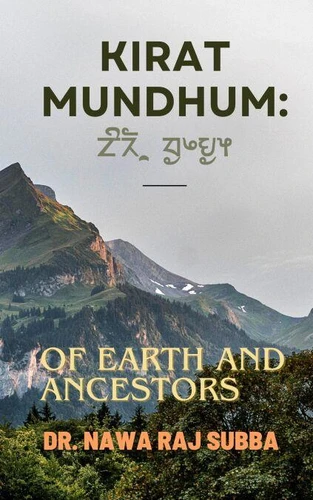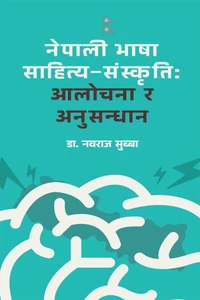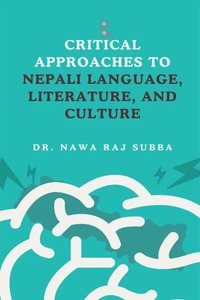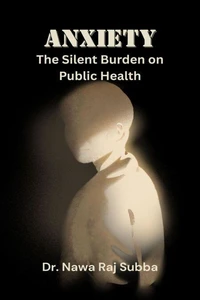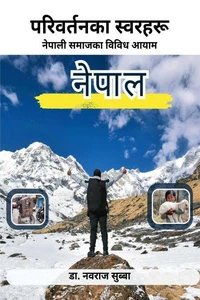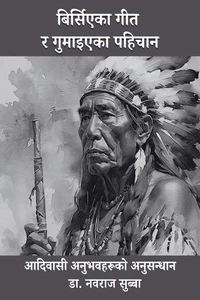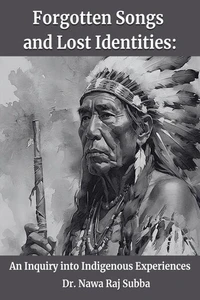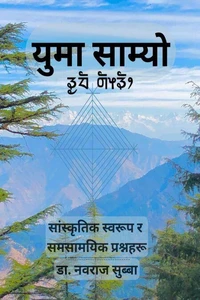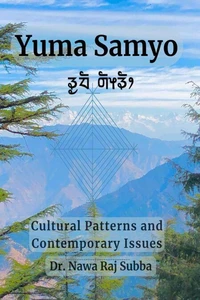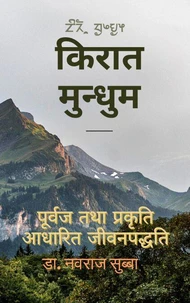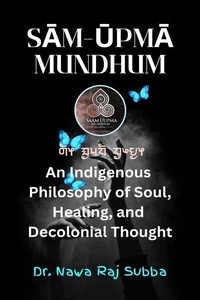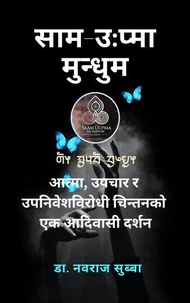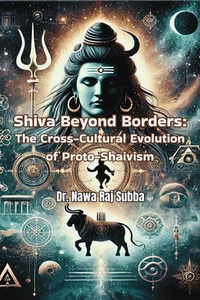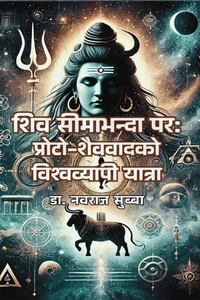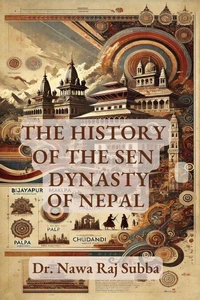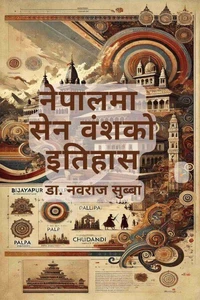Kirat Mundhum: Of Earth and Ancestors
Par :Formats :
Disponible dans votre compte client Decitre ou Furet du Nord dès validation de votre commande. Le format ePub est :
- Compatible avec une lecture sur My Vivlio (smartphone, tablette, ordinateur)
- Compatible avec une lecture sur liseuses Vivlio
- Pour les liseuses autres que Vivlio, vous devez utiliser le logiciel Adobe Digital Edition. Non compatible avec la lecture sur les liseuses Kindle, Remarkable et Sony
 , qui est-ce ?
, qui est-ce ?Notre partenaire de plateforme de lecture numérique où vous retrouverez l'ensemble de vos ebooks gratuitement
Pour en savoir plus sur nos ebooks, consultez notre aide en ligne ici
- FormatePub
- ISBN8230756941
- EAN9798230756941
- Date de parution29/06/2025
- Protection num.pas de protection
- Infos supplémentairesepub
- ÉditeurIndependently Published
Résumé
'Kirat Mundhum: Of Earth and Ancestors' tracks Kirat people, an indigenous Himalayan civilization that existed even before Vedic civilization and whose culture forms identities today. The book relates the spiritual and cultural recollection of a group of people whose set of worldviews is basically naturalistic, genealogical, and cosmic, according to the oral tradition, mythic narrative, archaeological evidence, and ritual customs.
There are nine chapters of the book, and the book starts with a close examination of the geographical ancestry of Kirats and old dynasties. It analyzes their active interactions with other civilizations around them, including the Vedic culture, through written and oral accounts. The indiction depicts that Kirats are never separated from their homelands, sacred forests, and the natural order. Kirat theology centers on worship of nature, contact with spirits, and belief in ancestors.
The spiritual organization of the Kirat religion is exposed even in the literature, laying stress especially on such names of deities as Yuma Sammang, Theba Sammang, ' Tangri, as well as birth, death, and reincarnation. This cosmology is constructed by making use of prayers, mantras, and myths carried in the holy oral literature of the Kirat people, entitled Mundhum. The text says that other ritualists, such as the Nackhong, Samba, and Phedang, govern the physical and the spiritual worlds.
The book discusses the religion, languages, oral literature, dance, folklore, social organization, and exclusive eco-knowledge of the Kirat people. These traditions have been discussed as past, present, and as a world view hypothesis of harmony and reciprocity with the planet. The concept of a balance in the universe, the existence of an equilibrium between the intangible and physical, the concept of cosmic balance, Tong sum, Tong shim, and that of the Samba as a ceremonial technician belong to the ancient, yet very important, theory of equilibrium.
The latter chapters are about the cultural revival and religious reform amongst the Kirat people, modern-day education and technology, and political identity. On the critical analysis of modern efforts to preserve and reuse Kirat religious practices against the scenario of globalization, environmental destruction, and cross-generational shift, it presents Kirat cosmology as environmental learning and spiritual modification.
The present work, with its appendices of a select bibliography, glossary, and transliteration of ancient mantra, is a tribute but also a contribution to the scholarship of a living native traditionalism named Kirat: of earth and ancestors. The book is highly needed by a reader who would like to hear about indigenous research and spiritual ecology, Himalayan history, and the validity of ancestral knowledge systems in the 21st century.
There are nine chapters of the book, and the book starts with a close examination of the geographical ancestry of Kirats and old dynasties. It analyzes their active interactions with other civilizations around them, including the Vedic culture, through written and oral accounts. The indiction depicts that Kirats are never separated from their homelands, sacred forests, and the natural order. Kirat theology centers on worship of nature, contact with spirits, and belief in ancestors.
The spiritual organization of the Kirat religion is exposed even in the literature, laying stress especially on such names of deities as Yuma Sammang, Theba Sammang, ' Tangri, as well as birth, death, and reincarnation. This cosmology is constructed by making use of prayers, mantras, and myths carried in the holy oral literature of the Kirat people, entitled Mundhum. The text says that other ritualists, such as the Nackhong, Samba, and Phedang, govern the physical and the spiritual worlds.
The book discusses the religion, languages, oral literature, dance, folklore, social organization, and exclusive eco-knowledge of the Kirat people. These traditions have been discussed as past, present, and as a world view hypothesis of harmony and reciprocity with the planet. The concept of a balance in the universe, the existence of an equilibrium between the intangible and physical, the concept of cosmic balance, Tong sum, Tong shim, and that of the Samba as a ceremonial technician belong to the ancient, yet very important, theory of equilibrium.
The latter chapters are about the cultural revival and religious reform amongst the Kirat people, modern-day education and technology, and political identity. On the critical analysis of modern efforts to preserve and reuse Kirat religious practices against the scenario of globalization, environmental destruction, and cross-generational shift, it presents Kirat cosmology as environmental learning and spiritual modification.
The present work, with its appendices of a select bibliography, glossary, and transliteration of ancient mantra, is a tribute but also a contribution to the scholarship of a living native traditionalism named Kirat: of earth and ancestors. The book is highly needed by a reader who would like to hear about indigenous research and spiritual ecology, Himalayan history, and the validity of ancestral knowledge systems in the 21st century.
'Kirat Mundhum: Of Earth and Ancestors' tracks Kirat people, an indigenous Himalayan civilization that existed even before Vedic civilization and whose culture forms identities today. The book relates the spiritual and cultural recollection of a group of people whose set of worldviews is basically naturalistic, genealogical, and cosmic, according to the oral tradition, mythic narrative, archaeological evidence, and ritual customs.
There are nine chapters of the book, and the book starts with a close examination of the geographical ancestry of Kirats and old dynasties. It analyzes their active interactions with other civilizations around them, including the Vedic culture, through written and oral accounts. The indiction depicts that Kirats are never separated from their homelands, sacred forests, and the natural order. Kirat theology centers on worship of nature, contact with spirits, and belief in ancestors.
The spiritual organization of the Kirat religion is exposed even in the literature, laying stress especially on such names of deities as Yuma Sammang, Theba Sammang, ' Tangri, as well as birth, death, and reincarnation. This cosmology is constructed by making use of prayers, mantras, and myths carried in the holy oral literature of the Kirat people, entitled Mundhum. The text says that other ritualists, such as the Nackhong, Samba, and Phedang, govern the physical and the spiritual worlds.
The book discusses the religion, languages, oral literature, dance, folklore, social organization, and exclusive eco-knowledge of the Kirat people. These traditions have been discussed as past, present, and as a world view hypothesis of harmony and reciprocity with the planet. The concept of a balance in the universe, the existence of an equilibrium between the intangible and physical, the concept of cosmic balance, Tong sum, Tong shim, and that of the Samba as a ceremonial technician belong to the ancient, yet very important, theory of equilibrium.
The latter chapters are about the cultural revival and religious reform amongst the Kirat people, modern-day education and technology, and political identity. On the critical analysis of modern efforts to preserve and reuse Kirat religious practices against the scenario of globalization, environmental destruction, and cross-generational shift, it presents Kirat cosmology as environmental learning and spiritual modification.
The present work, with its appendices of a select bibliography, glossary, and transliteration of ancient mantra, is a tribute but also a contribution to the scholarship of a living native traditionalism named Kirat: of earth and ancestors. The book is highly needed by a reader who would like to hear about indigenous research and spiritual ecology, Himalayan history, and the validity of ancestral knowledge systems in the 21st century.
There are nine chapters of the book, and the book starts with a close examination of the geographical ancestry of Kirats and old dynasties. It analyzes their active interactions with other civilizations around them, including the Vedic culture, through written and oral accounts. The indiction depicts that Kirats are never separated from their homelands, sacred forests, and the natural order. Kirat theology centers on worship of nature, contact with spirits, and belief in ancestors.
The spiritual organization of the Kirat religion is exposed even in the literature, laying stress especially on such names of deities as Yuma Sammang, Theba Sammang, ' Tangri, as well as birth, death, and reincarnation. This cosmology is constructed by making use of prayers, mantras, and myths carried in the holy oral literature of the Kirat people, entitled Mundhum. The text says that other ritualists, such as the Nackhong, Samba, and Phedang, govern the physical and the spiritual worlds.
The book discusses the religion, languages, oral literature, dance, folklore, social organization, and exclusive eco-knowledge of the Kirat people. These traditions have been discussed as past, present, and as a world view hypothesis of harmony and reciprocity with the planet. The concept of a balance in the universe, the existence of an equilibrium between the intangible and physical, the concept of cosmic balance, Tong sum, Tong shim, and that of the Samba as a ceremonial technician belong to the ancient, yet very important, theory of equilibrium.
The latter chapters are about the cultural revival and religious reform amongst the Kirat people, modern-day education and technology, and political identity. On the critical analysis of modern efforts to preserve and reuse Kirat religious practices against the scenario of globalization, environmental destruction, and cross-generational shift, it presents Kirat cosmology as environmental learning and spiritual modification.
The present work, with its appendices of a select bibliography, glossary, and transliteration of ancient mantra, is a tribute but also a contribution to the scholarship of a living native traditionalism named Kirat: of earth and ancestors. The book is highly needed by a reader who would like to hear about indigenous research and spiritual ecology, Himalayan history, and the validity of ancestral knowledge systems in the 21st century.

